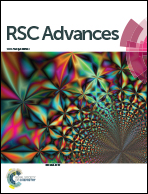A novel, efficient and sustainable strategy for the synthesis of α-glycoconjugates by combination of a α-galactosynthase and a green solvent
Abstract
Glycosynthases are becoming important enzymatic tools for the synthesis of oligosaccharides. Herein, we explore for the first time the synthesis of α-glycoconjugates using a α-glycosynthase in green solvents. Using this biocatalyst, β-Gal-N3 as donor, pNP-Glc and pNP-Man as acceptors, and green co-solvents we obtained high yields and excellent selectivities in the synthesis of α-glycoconjugates. In addition, reaction scale-up is feasible and co-solvent can be recovered and reused, increasing the sustainability of the reaction process. The results demonstrate that the combination of a glycosynthase and a green solvent is a promising alternative for the synthesis of glycoconjugates. The non-hydrolytic capability of this enzyme on the product obtained is a key feature that can be expanded to other glycosynthases.


 Please wait while we load your content...
Please wait while we load your content...